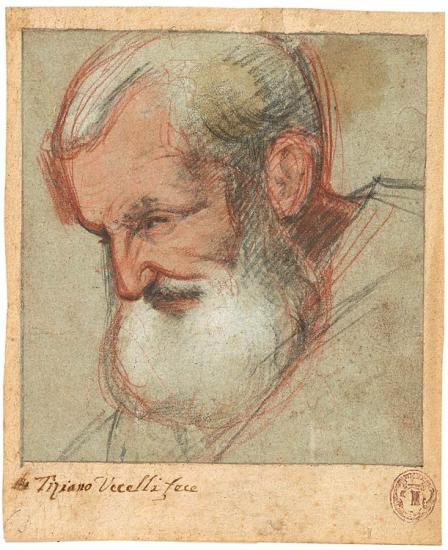
Head of an Old Man Turned to the Left
Gift of Lore Heinemann in memory of her husband, Dr. Rudolf J. Heinemann, 1998
Although Jacopo and his sons were based in his native Bassano del Grappa in the Veneto, the artist attracted numerous patrons from Venice for his vivid biblical scenes in rural settings.
This drawing is a study for the head of St. Joseph in Jacopo's painting The Flight into Egypt, now in the Toledo Museum of Art, Ohio. The painting is dated to the early 1540s on stylistic grounds. The drawing is one of the earliest examples of the artist's highly personal use of black, red, and white chalk on blue paper that was to become the hallmark of his style.
Innovations in Drawing
Technical and artistic innovations combined to make Renaissance Venice a vital creative center. Late-fifteenth-century artists generally worked in pen and ink and wash to make relatively finished drawings, but new techniques emerged that enabled them to produce more diverse, and often dramatic, effects. Artists such as Vittore Carpaccio perfected a method of applying ink with a brush onto Venetian blue paper (carta azzurra)—a support greatly prized by Albrecht Dürer. Artists of Titian and Bordone's generation, followed by Tintoretto, preferred a soft black chalk that was ideally suited to record tonal subtleties and create impressions of movement. Jacopo Bassano's innovative use of colored chalks made him a precursor to the pastel tradition. Tintoretto's younger contemporary, Veronese, developed entire compositions with rapid pen sketches while retaining a typically Venetian preoccupation with light.
